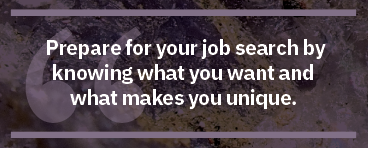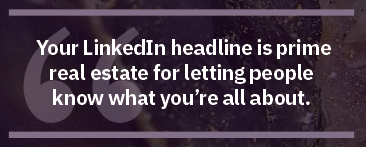By Alyssa Fox | STC Associate Fellow
Stay ready for your next opportunity
Networking shouldn’t be limited to your job search. It should also happen when you’re searching for opportunities, which should be ongoing: opportunities for cool projects in your current organization, opportunities to meet interesting people, opportunities to support an amazing cause, and opportunities to lift others up. If you’re constantly on the hunt for occasions to learn, grow, and achieve, then logic follows that you should always be ready with the tools you need to be successful in your networking efforts.
With anecdotal evidence noting that a large percentage of jobs are filled through networking,1 staying perpetually alert for these opportunities makes it much easier when the time for a job search does arrive. It can mean the difference between a handful of calls to some colleagues, and a major overhaul to your LinkedIn profile and résumé in a rush to build a network you should have had all along. Lay the right foundation so your networking yields the kind of results you’re hoping for.
Step 1: Prepping
Long before you start talking to people about a potential position, and even before you are in an active job hunt, you should know what kind of job you want, in what type of organization. This knowledge focuses your outreach on people with access to the types of roles or the types of organizations you’re interested in:
- Function: What do you want to be doing? Technical communication, UX writing, API documentation, content strategy, content design, instructional design, copywriting, marketing, etc.
- Responsibilities: What do you like most and least about a job? Do you want your next role to include or exclude those responsibilities? What do you want to be doing most of the time?
- Possible career path: Is there a career path in the organization? If you take a role in technical communication, will it get you to the content design role you ultimately want? If you take a role in user experience (UX) writing, will it get you to the Chief Marketing Officer role you ultimately want?
- Seniority/management: Do you want to manage people, or do you want an individual contributor role? Can you lead projects but not manage people if that’s your desire? Do you want to be a senior individual contributor with a strategic role?
- Company: What kind of company are you interested in? Do you have a preferred industry? Are you interested in working for a larger company with better benefits, or for a smaller company with more flexibility and autonomy? Do you want a company with a reputable leadership team, or would you rather take a chance with founders who are unknown but hungry?
- Work environment: Do you enjoy wearing many hats in a startup environment? Do you prefer a more structured job description? Do you want the stability of a more established company that’s been around longer? Would you rather build teams and processes in a newer company or move into a team that’s more well-established and has processes already built?
The second important part of preparation for your networking outreach is to know what makes you unique — that’s your personal value proposition. There are millions of job candidates out there all vying for a limited number of positions. It’s imperative that you build a story around how you stand out in that sea of people. For me, it’s my expertise in strategic leadership, merging marketing and technical content to tell a story, and leveraging that content as a business asset to drive demand, revenue, and customer retention.
I spent time analyzing my skillset, talking with others, and reviewing past work to arrive at that snippet of personal branding. To develop your own personal value proposition, try the following exercise:
- Make a list of your strengths.
- Read past performance reviews from previous managers, note the recurring strengths mentioned, and add them to your list.
- Review LinkedIn recommendations that you’ve received, noting the recurring strengths.
- Read over your list and look for repeated themes.
- Build a brief value proposition based on those themes.
- Ask a few colleagues, friends, and family members for feedback on your value proposition.
- Refine until you’re happy with it.
 Step 2: Branding
Step 2: Branding
Now that you’ve determined your personal value proposition, it’s time to show it to the world. This step takes the longest, but it’s worth it in the end.
Personal branding is all about the presentation. When job searching, it’s essential to keep your brand from getting stale. Your brand is represented in your LinkedIn profile, résumé, cover letter, and associated content, so review them frequently and keep them fresh.
Always-On Networking
Networking should always be happening, even when not job searching. Your LinkedIn profile is usually the first thing your network sees. While your LinkedIn profile is your public résumé, don’t copy and paste your whole résumé here. It should be a nutshell version of your accomplishments and view into your career. The key is that it shouldn’t be ordinary or boring, or the information must be up to date.
Your headline is the first thing people see on LinkedIn aside from your name. Part of it even shows when people search for you, whether they click through to your profile or not, so it’s prime real estate for letting people know what you’re all about. Use keywords that people search for, and don’t let it just default to your current title at your current company. If you’re an “Information Developer II at Bluebox Corporation” but you aspire to be a content designer, say so in your headline to improve search results! Your current job title also doesn’t reflect any of the uniqueness you bring to the table that we discussed earlier. Finally, don’t put anything about seeking opportunities in your headline. Recruiters like to look for people who have jobs already. Note the difference in Figure 1. If your headline is the hook, your summary is the line and sinker — this is where your personal value proposition really does the work for you. Write a summary that tells a story about who you are, what you do, and what you stand for. Again, the key is to be memorable (in a good way). In Figure 2, the box on the left could describe about 95% of technical communication professionals. But the box on the right is unique, shows specifically what they can do for you, and uses graphical elements to stand out.
During the Job Search
If you are job searching, remember that the job search isn’t always linear. Let’s talk about the roles of each part of the search and what comes next:
- The LinkedIn profile is your public résumé. If your LinkedIn profile sparks an interest, a recruiter or potential hiring manager will ask for your résumé.
- Your résumé is to help you get an interview, not to get you a job. Plant the seed, tell a story, and show what makes you unique in your résumé (and cover letter).
- The interview gets you the job. And remember, it’s a two-way conversation.
- Once you both determine it’s a good fit, you get an offer and accept. Celebrate your new job!
Showing continuous learning is crucial to keeping your brand relevant. Take free or inexpensive online courses and attend continuing education webinars when you can. Consider writing blog posts or LinkedIn articles on your areas of expertise to get your name and knowledge out there. Expand your network by engaging with those who comment on and share those posts.
Step 3: Networking
Though it might seem like networking is all about just going to an event and meeting people, that’s the shortest and simplest step in the process. If you’ve taken the time to do steps 1 and 2 thoroughly, step 3 will be easier and more productive.
You’ve probably heard of all the usual things to do when networking — attend networking events with business cards or reach out on LinkedIn when you see a posted job that you’re interested in. But how do you tap into the hidden job market and find those roles that aren’t posted, or work with a hiring manager to create or tweak a role that might be just perfect for you? Here are some tips to help you dig a little deeper:
- If you’re interested in a specific company, find the appropriate hiring manager or department leader and send a LinkedIn connection request with a personalized note. Tell them why you’re interested in their company, mention mutual friends or shared experiences to make the connection. Ask for some coffee time to connect and hear about what they’re working on, even if they don’t have any open roles. When job hunting, I did this with five Chief Marketing Officers (CMOs)/VPs of Marketing around town, and four of them met me for coffee. I ended up getting an offer from one, got very close with another, had a two-hour conversation with the third, and got great contacts in the meantime. Even if they don’t have open headcount now, you want to be forefront in their mind when they do. Follow up every few months with a piece of content or link to useful information so they know you’re thinking of them.
- Pay attention to multiple jobs being posted at once in a similar function area or at a similar leadership level — this could indicate that a leader is building or rebuilding a team, and there could be opportunity to create new roles. Contact the functional leader via LinkedIn, note that it appears they’re rebuilding a team, and pitch your personal value proposition and how you can make a difference. I did this and got through two rounds of interviews for an unadvertised role that the CMO saw as helpful after talking with me.
- See if two posted job roles could possibly be combined. Contact the hiring manager with a proposal for how to combine them and why you’re a fit for that role based on your personal value proposition.
- If you’re a good — but not quite perfect — fit for a posted role, and can bring a unique skill or benefit, contact the hiring manager with a proposal.
- Watch the news. Our local business journal profiles companies receiving additional funding, indicating growth, so I contacted their heads of marketing (where I was looking for roles) to see if they were hiring or when they would be. I got an interview for a role this way without ever seeing anything about the role being posted on LinkedIn.
Networking is crucial in business success today, and you must nurture your network to realize its many benefits. The mutually beneficial relationships you build in your network will pay you back exponentially throughout your career, if you put in the time to do the preparation work first. Know who you are and what you want from your career and help others to do the same. It’s never too late to get started!
References
- Freeland Fisher, Julia. 2020. “How to Get a Job Often Comes Down to One Elite Personal Asset, and Many People Still Don’t Realize It.” CNBC. Last modified February 14, 2020. https://www.cnbc.com/2019/12/27/how-to-get-a-job-often-comes-down-to-one-elite-personal-asset.html.

ALYSSA FOX (alyssafoxstc@gmail.com) is a content strategist and marketing leader who thrives on improving customer experience through strong relationships and tailored content strategies. With extensive experience in technical and marketing content, Alyssa has a passion for leveraging content as a business asset to drive demand, revenue, and customer retention. She is a member of the American Marketing Association and past president and secretary of the Society for Technical Communication (STC). Alyssa is an STC associate fellow and has served many roles in the society. She speaks at conferences around the world about leadership, strategy, marketing, and content. She loves traveling, reading, eating out, and good grammar.






